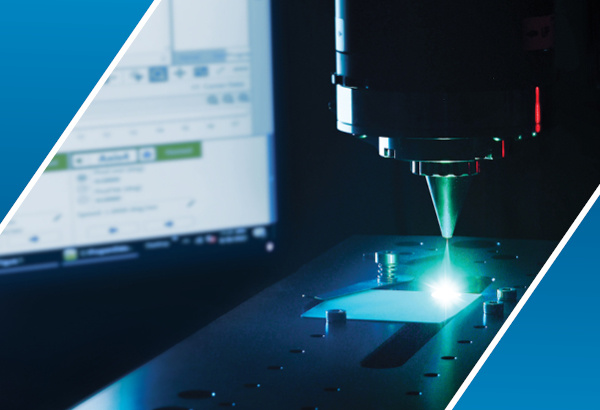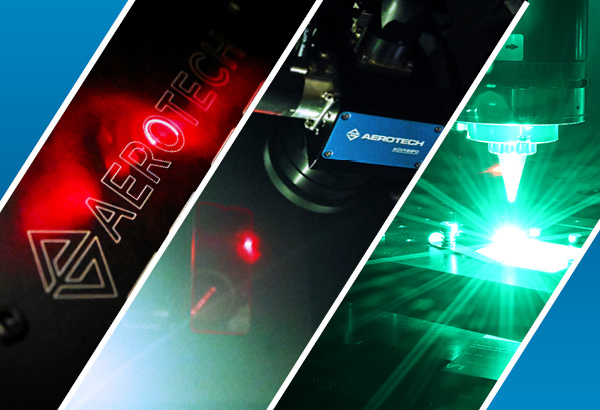Enhancing Precision with Galvo Laser Scanner Technology
The Critical Role of Precision in Laser Processing Precision in laser processing has transitioned from being a competitive advantage to an...
3 min read
 Bryan Germann
Dec 6, 2024 4:48:59 PM
Bryan Germann
Dec 6, 2024 4:48:59 PM

Precision is a non-negotiable attribute across industries such as manufacturing, automotive, medical devices, and electronics. These sectors demand meticulous accuracy to uphold the quality and functionality of intricate designs and products. Galvanometer laser scanners, or galvo scanners, are instrumental in achieving this precision. By leveraging high-speed mirrors to direct laser beams with remarkable accuracy, these devices enable applications such as engraving, cutting, and high-resolution 3D printing.
Yet, balancing precision with processing speed remains a key challenge. Historically, faster speeds often resulted in decreased precision—a trade-off that limited the performance of laser systems. Today, as industries seek to accelerate throughput while maintaining accuracy, galvanometer laser scanners are at the forefront of innovative solutions.
Achieving optimal speed and accuracy is one of the most significant challenges in galvanometer laser scanner systems. Faster movements introduce vibrations and positional inaccuracies, a problem inherent to high-speed motion control. This issue is particularly acute for galvanometer scanners, which rely on precise mirror angle adjustments to maintain the laser beam's trajectory.
Traditional control protocols, such as the widely used XY2-100, often "cut corners" in motion trajectories to maintain velocity, leading to positional errors during high-speed operations. To address this, manufacturers are integrating advanced control mechanisms that eliminate these trade-offs, enabling high-speed precision.
Mechanical advancements in galvo scanners have drastically improved their performance. Engineers have focused on reducing inertia and enhancing structural stiffness through innovative motor designs and optimized scan head architectures. These enhancements allow galvanometer laser scanners to execute faster, more accurate movements. Additionally, improvements in thermal management ensure performance consistency during extended operations by minimizing heat buildup.
By optimizing the ratio of Field-of-View (FOV) to Effective Focal Length (EFL), modern designs enable larger scanning areas without compromising accuracy. These innovations make galvanometer laser scanners ideal for applications demanding high precision and reliability, such as medical device manufacturing and electronics.
Advanced motion control systems are pivotal for achieving the next level of precision in galvanometer laser scanners. High-resolution feedback systems and sophisticated control algorithms empower these scanners to deliver unparalleled trajectory accuracy, eliminating errors caused by dither and jitter.
Furthermore, modern scanners offer open, low-level control capabilities, allowing users to customize motion profiles for specific application needs. For example, high-acceleration and constant-velocity tasks, which are highly sensitive to trajectory deviations, benefit significantly from these capabilities. Advanced systems like Aerotech's AGV20-XPO-E2 showcase this innovation, reducing peak-to-peak errors and enhancing tracking accuracy in demanding industrial scenarios.
The Field-of-View (FOV) is a critical performance factor for galvanometer laser scanners. A larger FOV enables the processing of more parts within a single setup, boosting productivity. However, traditionally, larger FOVs introduced stitching errors and reduced resolution.
To overcome these limitations, manufacturers now employ longer Effective Focal Lengths (EFL) and integrate high-resolution feedback systems, ensuring consistent accuracy across expanded scanning fields. This delicate balance between FOV and EFL is pivotal for achieving high-speed processing without compromising precision, particularly in large-format cutting and engraving applications.
The evolution of galvanometer laser scanner technology is accelerating, driven by emerging trends such as artificial intelligence (AI) and machine learning. These technologies promise to enhance motion control, optimize trajectory planning, and enable predictive maintenance, further boosting accuracy and reliability.
Innovations in materials science are also contributing to lighter, stiffer components, which reduce inertia and elevate dynamic performance. As these advancements become mainstream, the potential for galvanometer laser scanners to transform industries will only grow, enabling unprecedented productivity and precision.
Galvanometer laser scanners are redefining the landscape of laser processing. By addressing traditional trade-offs between speed and accuracy and incorporating cutting-edge technologies, these systems are setting new benchmarks for industrial precision. As the technology evolves, galvanometer laser scanners will continue to expand their impact, paving the way for a future where speed and precision seamlessly coexist.
The AGV-XPO 2-axis laser scan head combines a rigid, low inertia rotor and nanometer-resolution digital feedback encoder so you’ll see the highest throughput and best part quality for applications with long focal lengths and low dither requirements. Coupled with our Automation1 control platform, it enables unmatched discrete feedback of position error and tuning ability.


The Critical Role of Precision in Laser Processing Precision in laser processing has transitioned from being a competitive advantage to an...

The Critical Role of Precision in Laser Processing In laser processing, precision is not merely a beneficial attribute—it is an operational...